by Nick Pang.
Just like the minimalist road running shoes of 2013, these trail shoes will be lower to the ground at 6mm or less, lightweight, moderate cushioning, and some protection. Footwear manufacturers like Merrell, New Balance, and Inov-8 are coming out with shoes for the full minimal shoes spectrum – from the beginner to the most advanced runner. On one end, there will be trail shoes for beginners with 6mm drop and ample cushioning. On the other end, there will be shoes for the most advanced runners with zero drop, no protection, and barely any cushioning. And everything in between to cater to the general transitioning trail runner.
One trend that is emerging for ultra and trail running is maximal cushioning. Trail shoes like the Hoka One, New Balance Leadville 1210, and Altra Torin will find a steady and growing audience of long distance runners. But from my personal experience, too much cushioning will ultimately lead to muscle atrophy so this is not sustainable injury-free running.
What follows are the top 10 most anticipated minimalist trail running shoes of 2013 in alphabetical order. I can guarantee you that the top 3 trail running shoes for 2013 will come from this list, just as with my list of road running shoes. For more information, also go here: http://minimalistrunningshoes.org/minimalist-shoes-tested
Altra Lone Peak 1.5
The Altra Lone Peak was designed to conquer the Wasatch 100. While the foot-shaped design allows athletes to stay relaxed and comfortable for hours, this do-everything mountain shoe promotes happy feet, increases ankle stabilization, and improves form with the zero drop platform. Also features an innovative, sandwiched StoneGuard system that deflects rocks into the midsole for a smoother and more stable ride. Available April 2013 with an MSRP of $115.
Inov-8 Trail Roc 150
The lightest shoe in the Inov-8 trail shoe collection, focusing purely on minimalist performance. The non-existent midsole provides a low profile authentic barefoot feel. Three sticky rubber compounds varying in hardness give optimal wear and maximum grip. A zero-drop, zero-midsole platform means nimble performance, and a lugged outsole provides excellent traction on loose and dry trails. Available February 2013 with an MSRP of $100.
Merrell Ascend Glove
The Ascend Glove is Merrell’s solution for runners who want a zero-drop trail shoe with a bit of protection (10.5mm stack height) compared to the more minimal Trail Glove. The Ascend Glove should excel on more technical or rugged trails. It has a new open mesh pattern allows for optimal breathability and flexibility without compromising security. Key here is the lugged outsole which offers durability as well as traction on a variety of terrain types. Available July 2013 with an MSRP of $120.
Merrell Trail Glove 2
An upgrade to the popular and first Merrell Barefoot shoe launched over a year ago, the Trail Glove 2 has a less structured upper and made with seamless material for a soft, natural feel on the foot. The new lacing system feature only two of the OmniFit lace closures to allow easy on and off and allowing for better forefoot splay. Available March 2013 with an MSRP of $110.
Mizuno Wave EVO Ferus
Designed for midfoot running across all surfaces and terrains, the Mizuno EVO Ferus (Latin for ‘fierce’) has an aggressive ‘X’ outsole pattern to provide extra grip and traction. Designed on the same EVO platform as the top ranked Wave EVO Levitas, it has wave technology in the forefoot for maximum protection, comfort, and ride. Available July 2013 with an MSRP of $110.
New Balance 1010v2 Trail
New Balance is also adding to the Minimus collection with the new and improved Minimus 1010v2 trail. This updated edition continues to offer the perfect blend of minimal and traditional features with fit updates and innovative advancements. The 1010v2 continues to round out the Minimus collection for New Balance by acting as a gateway for runners looking for lower stack heights but with more traditional support. This update reengineers the outsole featuring a slightly more rugged lug construction that will guarantee the 1010v2 can handle any terrain a runner faces. Available July 2013 with an MSRP of $110.
Salomon Sense Ultra
The Salomon S-Lab Sense Ultra is all about trail performance. Designed for the world’s best ultra-marathoners, this racing shoe features a low-profile design to allow for an uninhibited stride and lightweight cushioning for protection from the trail. A lugged outsole provides unrelenting traction and a seamless upper limits friction on your foot for long-lasting comfort. For the most competitive ultra runner, the S-Lab Sense Ultra is a weapon you can’t be without. Available February 2013 with an MSRP of $180.
Skechers GObionic Trail
The Skechers GObionic Trail is built on the top performing GObionic platform. It is more minimal and flexible than the current GOtrail since it’s a zero drop without the sockliner and 4mm drop with the sockliner. It also performs very well as a road running shoe due to it flex grooves. Available June 2013 with an MSRP of $80.
SKORA CORE
SKORA CORE features a perforated Pittards Armor-Tan Goatskin leather upper, a combination lining with WR100X leather and antibacterial Agion mesh, and an asymmetric lacing system. With a unibody IBR outsole, the CORE offers an incredibly supple road feel, and superior anatomical fit. Featuring zero-drop and an 8mm forefoot/heel stack height, it also has a removable anti-microbial sockliner. Available March 2013 with an MSRP of $155.
VIVOBAREFOOT EVO Lite
The VIVOBAREFOOT EVO Lite is a multi Terrain running shoe with barefoot feeling and grip. The iconic EVO is now in its 4th generation and better than ever with this new model that is softer, lighter, stickier, faster, better looking, and even more barefoot. Go from trail to road with incredible multi-terrain grip and protection. Available March 2013.

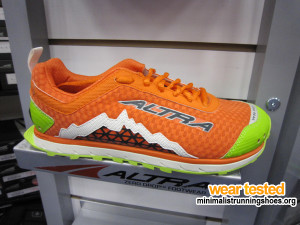

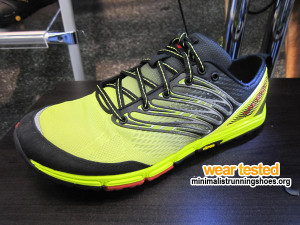
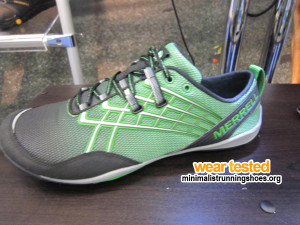

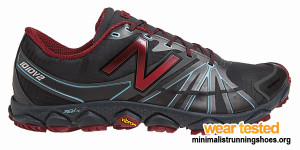
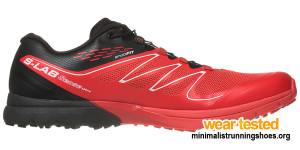
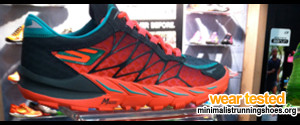
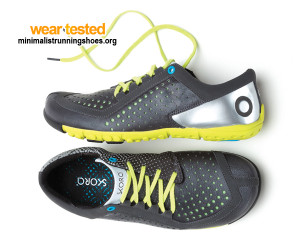

Thanks for the great summary of these shoes, they all look good. However, this new language in your opening paragraph is really disturbing and this is not the first place I have seen it. It used to be that barefoot/minimalist/zero-drop was all about injury prevention, running naturally, getting more enjoyment from running, and, perhaps most importantly, getting a fantastic new range of shoes to choose from over the last couple years for those of us that don’t want to run in traditional running shoes.
Now I see there is a new marketing twist — runners using a 6mm drop shoe with any cushioning are the “beginning” runners, while the guy in the vibrams is the most “advanced” runner. Just when I thought we were all converging on some agreement that this is all about “running fast and injury free” and that means finding what works for you, there is this new twist that getting to a zero drop shoes with no cushioning must be the actual goal because otherwise you are still not “advanced” enough. How else to read your first paragraph?
Do the race results support this view? Is this coming from Merrell’s new campaign? We really can’t find a better conceptual framework for talking about running shoes?
Garth,
Sustainable running injury-free is still what we all strive for. But we are still in the minority. Merrell and others are trying to get the masses on board so have to make it simple and get people started. Folks running in minimal shoes is still noise in terms of total runners. I’ve seen surveys that hard-core barefoot runners are less than 2%.
I wished they did this 3 years ago when I first started. I jumped into VFF KSO from Asics 12mm drop cushioned shoes and got hurt. Runners don’t listen to their body enough. This is a starting point.
Nick
Hi Nick,
You stated that in “your experience” running in low drop overly cushioned shoes leads to muscle atrophy. Can you elaborate on this? I have never heard of this before and I am concerned as I run in Hokas and I am getting faster and stronger as I train for my next marathon. When will they begin this process? How can you measure it?
Best,
Roman
This list lost all credibility when it included skechers.
Have you seen or used sketcher minimal transition shoes? They’ve done some very good things. If you judge a shoe by its brand and not its capabilities then you lose all credibility in your comments.
Jason is right — don’t judge a book by its cover, or maybe you are just trolling us? Whether it makes sense or not, they are doing interesting things with their shoes and getting deserved attention for it. The Go Trail is a very nice shoe that is really not duplicated by any other trail shoes I have worn. I would not trade it for my MT110s for single track, but it is great for long runs on a mix of roads, bridle trails, and single track. The GoRun Ride turned out to be too much shoe for me, but it still has a nice feel and I will probably try the GoRun 2 at some point.
Although Daniel’s comment should be viewed as questionable, it does raise the point about Skechers.
Skecher’s history of shoe development seems to be more copying other designs as you see their web page. It seems most of the “new designs” have a look A LOT similar to other brands (see especially the TOMS shoes and Skechers’ “BOB” shoes). This leaves a lot of people wondering about their running shoes and how truly innovative and different they really are, which is something Skechers will have to work very hard to convince people they are.
Jason, although you are correct, perception of a brand is a “make-or-break” item when it comes to sales. Look what happened when Toyota had issues in regards to the Camry. Sales plunge at Toyota and while they are back up, the negative view people had of Toyota was PERCEIVED. And again, that is what Skechers must try to overcome (which will be very difficult).
Garth, although you seem to find Skechers okay, I find their running shoes not that good. I find INOV-8 running shoes to be much more superior (reflected in that I have 10 pairs of INOV-8) than Skechers (ran in the GORun for 2 months and was not that impressed) and have a much larger offering that the few shoes Skechers offer.
In doing some research on INOV-8, I find that they have more a background in truly making performance running shoes (with people that do run and compete, or did compete and still run), whereas Skechers seems to really not have the people who do run and compete (or did). And given all the awards INOV-8 has received in such a short time (found in 2008), INOV-8 seem to have a more reputable foundation to which to grow from.
Wayne Edy, the founder of INOV-8, said it best when he said, “You can buy a good pair of shoes, but as to the manufactures, you cannot buy the reputation.” And reality speaking Skechers has a VERY long run ahead of them if they want
What this list is not is a shoe review nor should it have been a list of “Top 10 Most-Anticipated Minimalist Trail Running Shoes of 2013.” What this article should be is more an article of “Minimalist Trail Running Shoes To Look At For Spring 2013.” It is up to the individual runner to determmine if a particular brand or shoe is “most anticipated….”
I use the Go Bionic and like them.
I bought the Skechers Go Bionic Trail and used them for 2 mountain runs on mostly packed dirt (30 km). They are not trail shoes, period. There is no protection against rocks. This is painful and unsafe. The outside shape is not natural at all (compare to Skora) and made me trip twice and fall once.
Other than that, they feel super comfortable when you’re not moving. So yeah, that’s a plus I guess.
New Balance has the best minimal trail running shoes by far. The Minimus Trail v2 is so much better than the first one with style and fit. If you’re into trail running check out New B alance first!
i really enjoy minimal low drop shoes for most day to day running but at 50k and beyond i feel like i need something more substantial on my feet. for 2013 i’m excited to try the NB leadvile and Inov-8 trailroc 245/ 255. i’ll take a little “muscle atrophy” if it means i can finish a 50 or hundred.
I didn’t realize the Skora Core was designed for trail running. I currently run in the Skora Form and Phase models and absolutely love them.
I’m running the GT50K (non-technical trail) in two week in the Form.
The SKORA Core was really designed for the roads. I’ve extensively tested both of the new SKORAs (Core & Phase), and I while I love them for the roads, I wouldn’t recommend them for the trails at all. There are many better trail options out there.
This is my experience.
https://www.youtube.com/watch?v=PZ-s1uKeIek